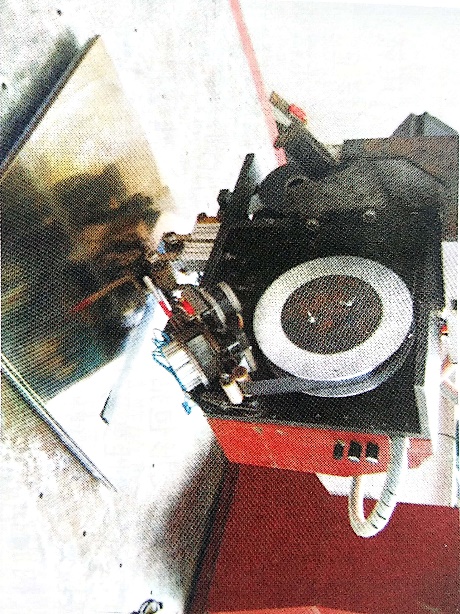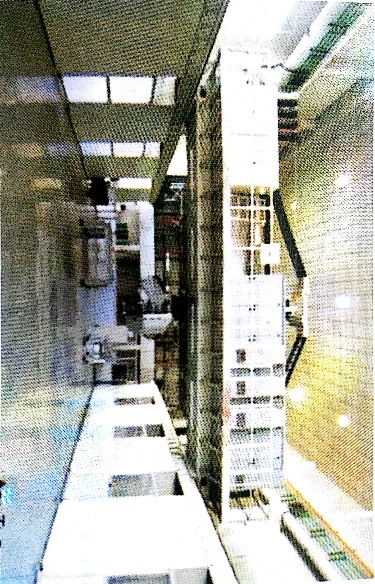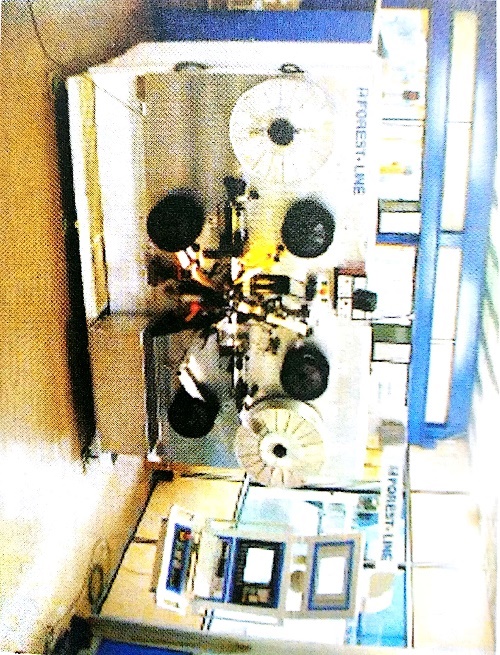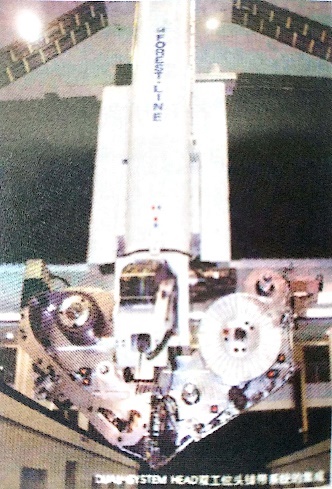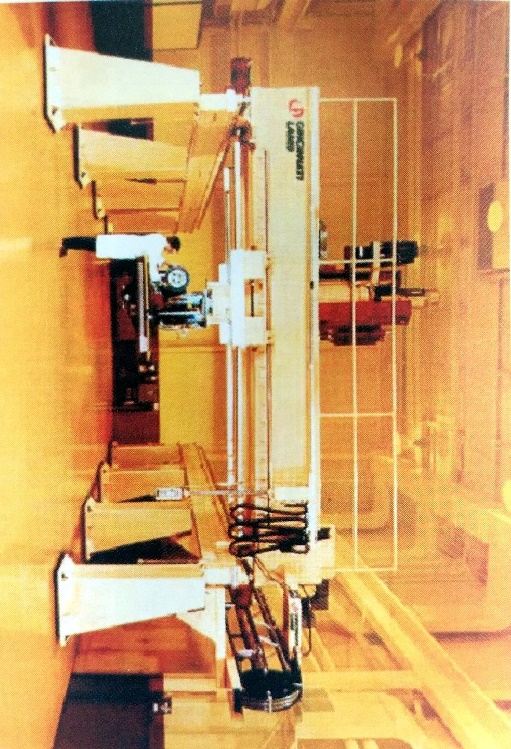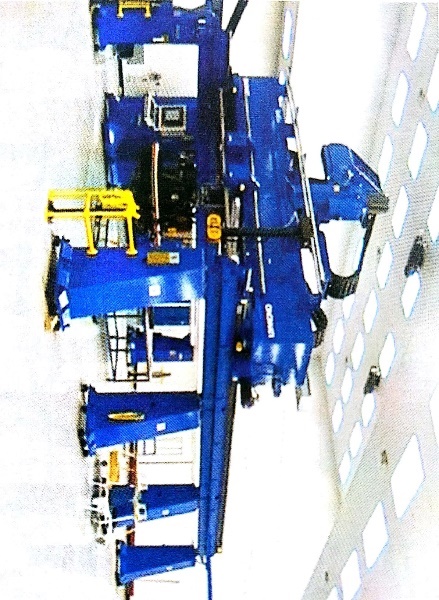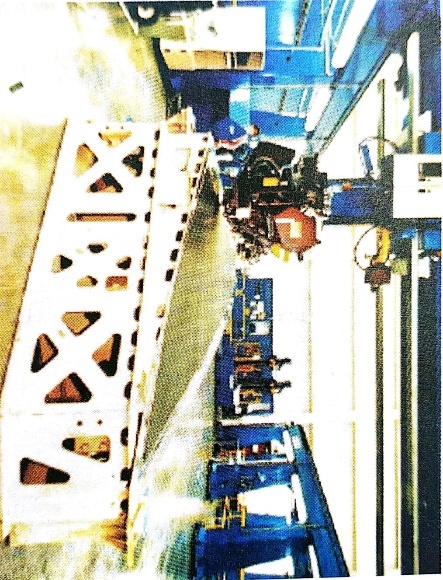风力发电机叶片成型铺放装备设计毕业论文
2020-04-11 17:57:18
摘 要
随着人们对经济与环境协调发展意识的提高,寻求一种清洁、可再生的新能源逐渐成为各个国家的发展目标。目前,世界上可再生能源发电主要包括风力发电、水力发电、太阳能发电、潮汐能发电、地热能发电和生物质能发电等 [[1]]。其中,风能作为一种清洁、可再生的新能源,它具有总储量大、分布广泛等优点,而且风力发电技术较为成熟,在可再生能源中成本相对较低,可以大规模进行商业化应用,具有广阔的发展前景,是新能源领域中最具有竞争力的一个。随着风能行业的快速增长,风力发电机叶片的尺寸不断增加,目前常见大规模使用的风力发电机叶片的长度大约是50m,最大的风力发电机叶片已经超过70m长。风力发电机叶片的巨大尺寸使其制造相当具有挑战性[[2]]。
针对现有风力发电机叶片制造效率低,精度低以及成本高的缺点,本文以功率为2MW风力发电机叶片为研究对象,选用高强度碳纤维/环氧树脂预浸带,研制新型风力发电机叶片制造设备——复合材料自动铺带机,并进行运动仿真和关键零部件的有限元分析,为其今后应用的可行性提供基础。论文的主要研究内容如下:
首先,提出了三种风力发电机叶片铺放机设备的总体设计方案,通过比较三种方案的优缺点,最终选用龙门高导轨结构形式。自动铺带机主要由以下两部分构成:龙门架和铺带头。
其次,对自动铺带机的核心部件------铺带头进行详细设计,其主要由预浸带张力控制系统,预浸带切割系统,预浸带加热系统和预浸带施压系统组成,完成各部分机械结构设计和控制方案设计。
然后,设计过程中以SolidWorks为平台,对整个自动铺带机建立了完整的三维模型,同时利用SolidWorks中运动仿真模块对预浸带的切割过程进行运动仿真,直观地表现出切割装置中各个机构的运动形式。
最后,运用SolidWorks中有限元分析模块,选取自动铺带机中起主要支撑作用的关键零件------横梁作为有限元分析对象,通过对有限元分析结果的详细分析,验证横梁材料选取以及结构设计的合理性和可靠性。
关键词:自动铺带机,碳纤维预浸带,铺带头,横梁有限元分析
Abstract
With the improvement of people’s awareness of the coordinated development of the economy and the environment, the search for a clean and renewable new energy has gradually become the development goal of various countries. At present, the world's renewable energy power generation mainly includes wind power generation, hydropower generation, solar power generation, tidal power generation, geothermal power generation and biomass power generation. Among them, wind energy, as a clean and renewable new energy source, has the advantages of large total reserves, wide distribution, etc., and wind power generation technology is relatively mature, and the cost is relatively low in renewable energy, and can be applied commercially on a large scale. With broad development prospects, it is the most competitive one in the new energy field.
In view of the disadvantages of low manufacturing efficiency, low precision, and high cost of existing wind turbine blades, this paper uses 2MW wind turbine blades as research objects, and selects high-strength carbon fiber/epoxy resin prepreg tape to develop a new type of wind turbine blade manufacturing equipment. ——Automated belt laying machine for composite materials, and performing motion simulation and finite element analysis of key components to provide the basis for the feasibility of future applications. The main research contents of the paper are as follows:
First, the overall design of three wind turbine blade placement machines was proposed. By comparing the advantages and disadvantages of the three options, the gantry structure was finally selected. The automatic tape laying machine is mainly composed of the following two parts: a gantry system and a tape leader.
Secondly, a detailed design is made on the core components of the automatic tape laying machine, including pre-impregnated tape tension control devices, pre-impregnation tape cutting devices, pre-impregnation tape heating devices, and pre-impregnation tape pressure application devices. Composition, complete the mechanical structure design and control program design of each part.
Then, using SolidWorks as a platform, a complete three-dimensional model of the entire automatic tape-laying machine was established during the design process. At the same time, motion simulation of the pre-dip tape cutting process was performed using the motion simulation module in SolidWorks, the movement of each mechanism in the cutting device was showed visually
Finally, the finite element analysis module in SolidWorks was used to select the key components that played the main supporting role in the automatic tape-laying machine. The cross beam was used as the finite element analysis object. The detailed analysis of the finite element analysis results confirmed the selection of the beam material and the rationality and reliability of structural design.
Key Words : automatic tape-laying machine, carbon fiber pre-impregnated tape, tape-lead, finite element analysis of beam
目 录
第一章 绪论 1
1.1课题背景 1
1.1.1风力发电机叶片的材料 1
1.1.2风力发电机叶片成型技术 1
1.2自动铺带技术国内外发展现状 2
1.2.1国内发展现状 3
1.2.2国外发展现状 4
1.3课题研究的目的及意义 6
1.4课题主要研究内容 6
第二章 自动铺带机的设计要求 8
2.1风力发电机叶片的型号 8
2.2自动铺带机的技术要求 8
第三章 自动铺带机总体方案设计 10
3.1龙门架 11
3.2铺放头 12
第四章 铺放头的设计及建模 13
4.1张力控制系统 13
4.1.1张力控制机械结构设计 13
4.1.2张力控制方案设计 14
4.2切割系统 15
4.2.1切刀进给机构 16
4.2.2切刀微调机构 16
4.2.3切割角度调整机构 17
4.2.4切割执行机构 17
4.3加热系统 18
4.3.1加热模块 18
4.3.2测速模块 19
4.3.3控制模块 20
4.4施压系统 21
4.4.1施压机械结构设计 21
4.4.2施压控制系统设计 22
第五章 预浸带切割过程运动仿真 23
5.1运动仿真概述 23
5.2预浸带切割过程运动仿真 23
5.2.1预浸带切割过程运动仿真步骤 23
5.2.2 预浸带切割过程运动仿真结果分析 24
第六章 自动铺带机主要零部件有限元分析 25
6.1 有限元分析概述 25
6.2自动铺带机主要零部件有限元分析 26
6.2.1横梁有限元分析过程 26
6.2.2横梁有限元分析结果分析 27
第七章 总结与展望 28
7.1总结 28
7.2展望 29
第一章 绪论
1.1课题背景
能源问题是现代人类社会发展急需解决的问题之一。风能由于清洁、可再生等优点受到世界各国的广泛关注,研制大功率风电机组,更加安全、高效地开发风能资源成为各国研究的热点课题,利用风能发电也是中国实现未来可持续发展的目标。2015年,中国风力发电累计并网容量达到12.9×104MW,其中海上风力发电累计并网容量达到560 MW。2015年,全国风力发电累计上网电量为1.8 × 108MW·h,其中海上风力发电量为100 × 104MW·h。风力发电机叶片是代表风力发电技术发展水平的关键零部件,其良好的设计、可靠的质量和优越的性能是保证风力发电系统正常运行的关键性因素。因此,叶片材料的选择以及制造水平的高低直接影响着整个系统的性能。
1.1.1风力发电机叶片的材料
先进复合材料是指采用连续纤维作为增强材料的复合材料。与传统材料相比,先进复合材料在性能、设计、制造等方面具有复合效应,性能可设计性、多功能兼容性和材料与构件制造的同步性等优点[[3]]。根据不同分类方式,可以将复合材料分为不同的类型,其中树脂基复合材料是目前发展最迅速、应用最广泛的一类材料。正是由于树脂基复合材料具有高比强度、高比刚度、抗疲劳性能好,耐腐蚀和可整体成型等优点,其在风力发电领域得到越来越多的应用。
目前,几乎所有大功率风力发电机叶片都采用复合材料制造,通常根据风力发电机的功率或叶片长度来选用不同种类的复合材料。一般认为,小型风力发电机叶片采用玻璃纤维增强聚酯树脂基复合材料,中型风力发电机叶片采用玻璃纤维增强环氧树脂基复合材料,大型风力发电机叶片采用碳纤维增强环氧树脂基复合材料。虽然碳纤维增强复合材料的价格较高,但是与玻璃纤维增强复合材料相比,它有着许多优越的性能,例如它的刚度是玻璃纤维增强复合材料的三倍,并且有着更好的抗疲劳特性[[4]]。
1.1.2风力发电机叶片成型技术
手糊法是风力发电机叶片成型方法中最基本、最简单的,但是手糊工艺在制造风力发电机叶片过程中存在许多不足,通过人工手糊的方式制造叶片不仅生产效率和精度较低,而且产品性能受生产环境以及工人技术水平的影响,质量分布不均匀,并且对于高性能结构复杂的风机叶片,手糊工艺也难以达到相应的技术要求。后来,树脂传递模塑(RTM)成型技术的出现很好地解决了这些问题。如图1.1所示,树脂传递模塑成型技术是在压力注入或外加真空辅助条件下,将具有反应活性的低粘度树脂注入闭合模具中浸润干态纤维结构并同时排除气体,在完成浸润后,树脂通过加热引发交联反应完成固化,得到复合材料构件[[5]]。与其它复合材料成形技术相比,RTM成型技术具有制造质量高,尺寸精度高、成本低和生产效率高等优点,其工艺过程如图1.2所示。
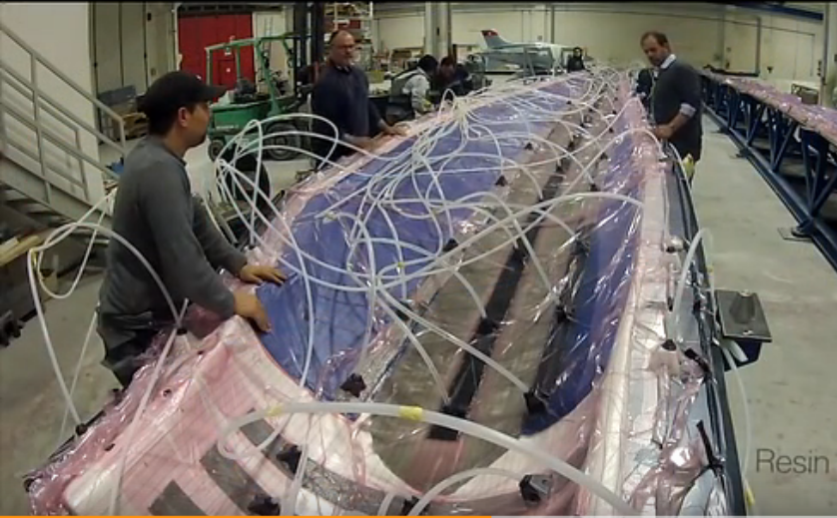
以上是毕业论文大纲或资料介绍,该课题完整毕业论文、开题报告、任务书、程序设计、图纸设计等资料请添加微信获取,微信号:bysjorg。
相关图片展示:
